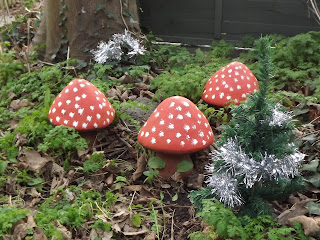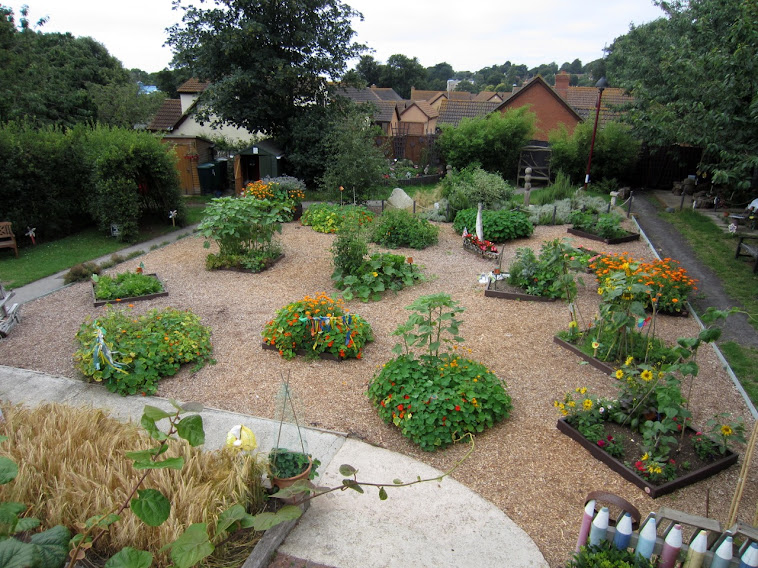We have no time to stand and stare..."
written by William Henry Davies in 1911 and taken from his book 'Songs of Joy and Others' .
With Christmas fast approaching and a time to perhaps think back over the past year, staring out from the Memory Garden earlier revealed small white flecks on the stems of the Rosemary plants there. They were in flower. These modest little white/mauve flowers had braved the last few days of cold and gale force winds.
 |
| The Memory Garden |
These inconspicuous little flowers are hardly visible until you get up close..
 |
| The Rosemary in flower |
As you lean in closer to look at them your clothes brush against the plant and as you walk away you realise that the plant has won. You smell the Rosemary on your coat and your hand! Clever stuff. Nature is like that.
"A poor life this is if full of care,
We have no time to stand and stare"
The poem is called 'Leisure'. Well worth a read in todays computer driven world.
Meanwhile in the pixie encampment things are stirring. They are getting ready for Christmas. They have kept a low profile since the school garden open day back in the Summer but now they are making themselves busy. What mischief awaits!
 |
| The pixies have been busy |
















































